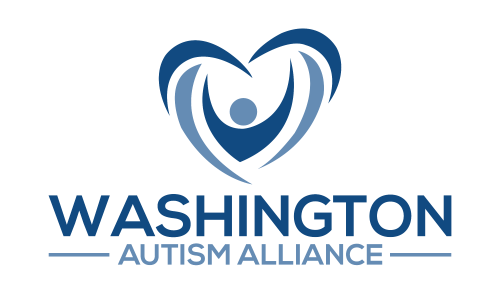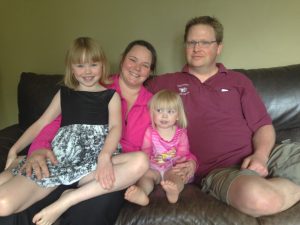 By Ann Dornfeld of KUOW
By Ann Dornfeld of KUOW
As educational practice catches up with federal law that requires students learn in the least restrictive environment, an increasing number of students with autism and other disabilities are learning alongside their typically-developing peers in mainstream classrooms.
But in Washington state, aspiring teachers don’t need to have experience working with students with disabilities to get certified. That can leave general education teachers at a loss when working with students with special needs, like seven-year-old Chloe Burton.
Chloe has autism. Mom Amy Schley said last year that Chloe thrived in a regular kindergarten classroom with typically-developing peers.
Her parents were optimistic about first grade, too. But as the academics increased during the first month of school Chloe’s teachers reported problems, Schley said. Instead of working Chloe was wandering around the classroom, or drawing. “We had numerous e-mail exchanges between the staff of the school and myself, just brainstorming what would be the cause of it. Maybe she had writing difficulties. We weren’t sure,” Schley said.
Chloe said when she didn’t get her work done during class time, she was punished. “It’s mean,” she said with a frown. “[They would] make me do all the work and let everybody else go out to recess.”
Schley said that along with being kept in from recess day after day, Chloe was also frequently sent to the principal’s office for not finishing her work. “We could see her anxiety increasing as she was aware of how she was treated differently,” Schley said.
The problems escalated. When Chloe got frustrated, she started lashing out — hitting and spitting at other students and teachers.
Schley said neither Chloe’s regular classroom teacher nor her special education teacher were trained in working with students with autism, and seemed to interpret Chloe’s behavior as willful disobedience. “But with autism, behavior is a form of communication,” Schley said. “If you understand what happens before, and what happens after, then you can decode it, figure out what they’re trying to communicate, and come up with a positive behavior intervention where you can teach them more appropriate skills to communicate that message.”
About two months into the school year, Schley said, district officials told her they wanted to move Chloe to a classroom for students with emotional and behavioral disorders.
Chloe’s parents are now fighting the move on the grounds that the district didn’t try enough intermediate strategies to keep Chloe in a regular classroom for at least part of the day.
The Shoreline School District can’t legally comment on individual students’ cases, but district spokesman Craig Degginger said Shoreline teachers are all trained to work with students with disabilities. “Our teachers, or virtually all, are considered ‘highly qualified’ under existing state law. They receive training serving special needs students in their teacher preparation programs and in their professional development during the year, what we call Response to Intervention,” Degginger said.
However, an independent evaluator from the University of Washington found that the district hadn’t done enough to address Chloe’s behavior before reassigning her, and that her teachers lacked training in working with students with autism.
That’s not unusual.
In Washington state, aspiring teachers don’t need to have experience working with students with disabilities before they’re certified. Neither the state nor most teacher training programs require hands-on training with students with special needs.
That kind of training is the focus of the University of Washington’s Experimental Education Unit at the Haring Center. There, some of the state’s aspiring special education teachers give social skills lessons to students with and without disabilities – even during math lessons.
On a recent afternoon, teacher Angela Erickson gave her kindergarten students social skills cues as they used colorful vegetable cards to practice addition. “Alfie, are you using both of these right now, or do you think you could share one with Amelia? Do you want to tell her “Here are the carrots?'”
Alfie paused, then passed the card. “Here are the carrots!”
“Thank you,” Amelia replied.
“Wow, that was so friendly!” Erickson said cheerfully.
Down the hall, Haring Center director Ilene Schwartz said children with autism don’t naturally pick up the kinds of social skills they need to get along with peers and adults. “Those kinds of things need to be taught explicitly to children with autism. We, number one, don’t train people to do that; and number two, they don’t often have the time or the resources they need to do that,” Schwartz said.
According to Schwartz, investing in social skills training isn’t just valuable for kids with autism. She said helping kids learn to communicate their feelings and needs constructively helps every child in a classroom.
Despite that, Schwartz said, it seems as though schools are focusing less on social and emotional skill development as the emphasis shifts to student performance on standardized tests. “I think teachers in general do a very good job in teaching the content areas, and addressing delays in the content areas. But the parts that are really hard are around these other issues that sometimes fall between the cracks,” Schwartz said.
Schley said despite her frustrations with daughter Chloe’s school experience, her teachers were all dedicated, hard-working and caring. “Even the principal just needs the school to run smoothly. He can’t have a loose cannon running and screaming through the halls,” Schley said. “I know everyone there is giving it their all. It just comes down to training.”
Schwartz said she’d like to see schools make building children’s social and emotional skills a priority again, to help students of every ability learn side by side.


